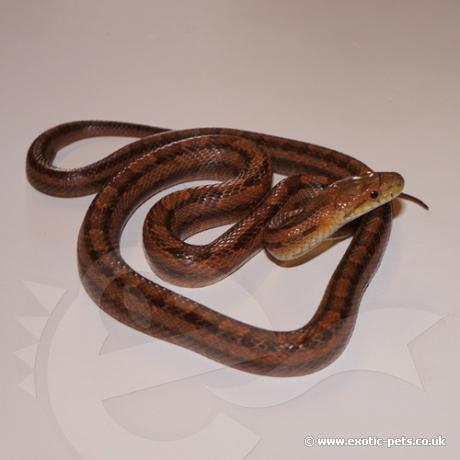What does an Everglades Rat Snake look like?
Adults appear to have bright orange colouration with barely discernible stripes. The chins and throats are usually some shade of yellow or white. Hatchlings are born with a pinkish hue which intensifies into orange with age.
Where do Everglades Rat Snakes come from?
These snakes originate from Florida and reside in wetland, woodland and grassland regions. They can be seen out in the open, basking in the sun or hunting in various forests or on plains. They have also been known to occupy tree cavities in order to stalk prey. The Everglades Rat Snake is most known as a great swimmer and uses this skill to escape predators.
How do you keep an Everglades Rat Snake?
Everglades Rat Snakes will become more docile over time and once they are used to their surroundings. The best enclosure would be a wooden vivarium as they are an excellent insulator of heat and will hold temperatures more easily. The vivarium should be at least 34 inches in length as adults grow up to 180cm. This length of tank will allow for a temperature gradient, meaning one end of the enclosure will be warm, but have enough distance for the temperature to drop at the cool end. A gradient of 70-75 degrees Fahrenheit on the cool side and 80-85 degrees Fahrenheit on the basking side is what you should be aiming for.
If you decide to use a heat light in the enclosure be sure to have a heat guard around the bulb to prevent the snake from burning itself. The light should also be connected to a dimming thermostat or mat stat if you’re using a ceramic bulb. If you decide to use a heat mat this too should be connected to a mat stat to help with temperature control.
The substrate should be dry in order to ensure humidity doesn’t build up within the enclosure. Therefore, some good options are aspen, lignocel or hemp bedding, and its also very easy to clean. The vivarium should also include décor, as this allows the snake to hide and feel safe. Multiple hiding spots will allow the snake to move freely and help with thermoregulation. Artificial plants will give the enclosure a natural look. In addition to this cork bark is great, as it also helps the snake remove stuck shed.
Feeding is very easy for this species, as they are not fussy at all. The size of the food you feed will depend on the size of the snake. All hatchlings should be fed on baby pinkies (baby mice) every 4 days or so. As they grow, this can be increased to two pinkies every 10 days, then slowly increase the size of the food. It is best to make a log of when your snake eats and sheds its skin as this is something you can always refer back to.
A water bowl big enough for the snake to submerge itself in should also be provided, and cleaned on a regular basis.
Do your research
Before you commit to buying any pet, please do your own independent research.

